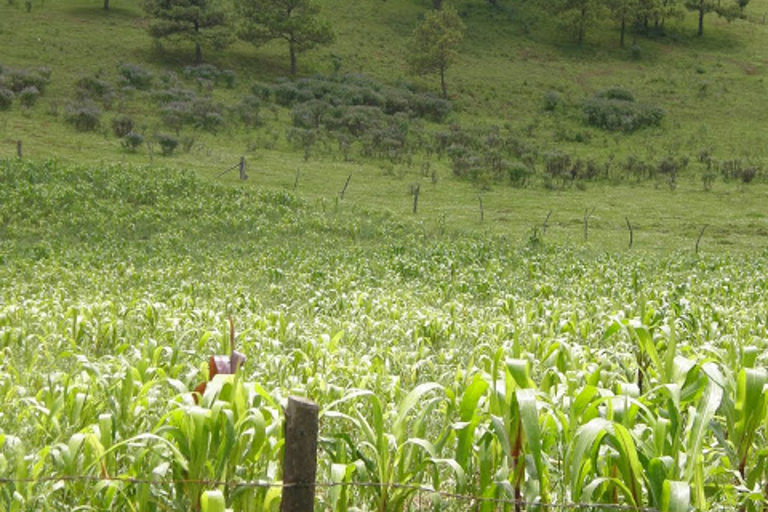Ed. note: Originally published in Spanish in La Jornada, September 8, 2020 | Victor M. Toledo*
Translated by Jane K. Brundage
The world has reached its limit. Humanity no longer resists. Who dares to defend this order full of injustice, shame, catastrophes, depredation? In the name of whom or what? What –ism can you defend today? It only remains to delve into natural history and human history in search of the essence of the species. To try to overcome it by tracing the paths of degradation that led to this present situation. The civilizing process sought to do away with two attributes that today are the cause of the terminal crisis being suffered: by the negation of the spirit and the destruction of nature. Both phenomena lie at the bottom of the malaise of modernity.
Sooner or later, every human being faces the challenge of recognizing their own spirit. Spirituality does not appear, except as a result of their confronting, not fleeing from, the world. It is the response of being ‘in front of the abyss’. Faced with the lack of logic or meaning of existence, faced with the incommensurability of the universe.
This intuitive act — arrived at not by exploration or investigation, but by revelation or enlightenment — arises from the idea of the existence of mysterious connections between the parts of nature that form a unity directed by an intelligent process. Hence, the recognition of a vital force that moves everything and to which all members of the human species are indebted. Without exception, this worldview was present in all the cultures that made up humanity during its almost 300,000 years of existence. It allowed humanity’s survival and gave continuity to the impulse already devised by other groups of evolving organisms: corals, jellyfish,
siphonophores,
bryozoans, ants, termites, bees, wasps, vertebrates and primates.
As a social species, Homo sapiens chose cooperation (I. Kropotkin’s mutual aid) as the supreme act, as the highest attribute, to drive its own evolution. All this meant living in an enchanted world, in a living envelopment, where each natural element was incarnated in a deity. The human accepted living in permanent equilibrium with that natural impulse. Spirituality, humility, brotherhood, communality, were values in action and permanent connection. The same ones that still survive in the 7,000 indigenous peoples of the world as distinguished by language and who, as has recently been discovered, possess territories equal to 25 percent of the planet’s total in 87 countries (Garnett, ST, Nature Sustainability, 2018).
The two elements destroyed during at least the last 4,000 years of history were the spirituality of human beings and their consequent recognition of that natural force. A process that today reaches its extreme expression in modern, industrial, capitalist, technocratic and patriarchal civilization, for which spirit and nature are a hindrance. The first assault was the conversion of spirituality into religiosity, into institutions of power that used the spirit as a pretext. The longstanding deities were transformed into gods, then went from polytheism to monotheism, until arriving at male gods, arrogant and intolerant. Polytheism in love with life gave way to monotheism fascinated with death (Michel Onfray,
Cosmos: Una ontología materialista, 2016: 55). The great massacres and tremendous genocides suffered by the human species were validated or sponsored by the greatest monotheisms during colonialism, fascism, communism and imperialism, and with the recent holy wars.
The destruction of nature, the disenchantment of the world, rests in the hands of science, the new way of knowing reality through reason, materialism, analysis and technique. The mastery of nature was glorified by the scientist Francis Bacon in the name of God. Science denied the existence of Madre Tierra | Mother Earth, revered and respected, and instead introduced the idea of an inanimate mechanical system, the vision of a machine (eco-system) to be scrutinized, controlled, dominated, and ultimately exploited. Converted into a factory, nature — a natural resource or natural capital — today is permanently violated or abused by actions guided by capitalist logic. A patriarchal act that according to J. M. Naredo is executed by work, the masculine category of neoclassical economics. Today, the situation is the greatest social inequality in history and the largest known ecological breakdown on a global scale (the climate crisis). The two central tasks of every conscious individual are the rescue of spirituality and (re)connecting with respect for nature. Three sectors are playing a strategic role in this: environmentalists, women, and indigenous peoples. In them are found the sources of inspiration and subversion needed to construct a different civilization.
Teaser photo credit: Caption: Milpa | Corn Field on the Purhépecha Meseta | Highlands, in Michoacán México. Credit: Reed Brundage





